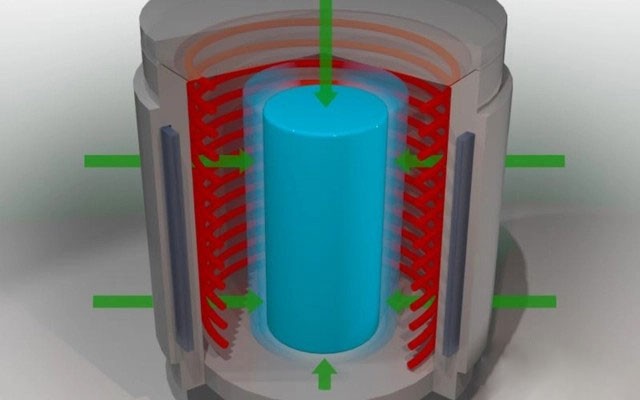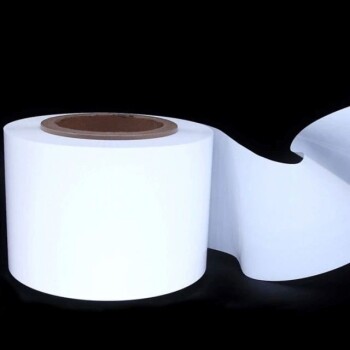Isostatic Pressing Principle
Basic Concept and Mechanism
Isostatic pressing technology is a sophisticated method that involves encapsulating sample powder within a high-pressure container. The core principle relies on the incompressible nature of a liquid or gas medium, which is utilized to apply uniform pressure to the sample from all directions. This uniform pressure is crucial as it ensures that the powder particles are evenly compacted, transforming the initially amorphous powder into a dense, solid blank.
The process begins with the precise placement of the powder sample into a specialized container designed to withstand high pressures. Once sealed, the container is filled with a liquid or gas medium, typically water or argon, which is known for its incompressibility. This medium acts as the pressure transmitter, distributing the applied force uniformly across the sample. The result is a homogenous compression that eliminates voids and gaps within the powder, leading to the formation of a dense, monolithic structure.
This method contrasts with traditional pressing techniques, where the pressure application is often directional and less uniform. The isotropic nature of isostatic pressing ensures that the final product has a consistent density throughout, which is particularly advantageous for materials requiring high structural integrity and performance.
In summary, isostatic pressing leverages the properties of incompressible fluids or gases to achieve a uniform, all-directional pressure application, resulting in the creation of dense, high-quality blanks from powder materials. This technique is foundational to various advanced manufacturing processes, particularly in industries where material uniformity and strength are paramount.
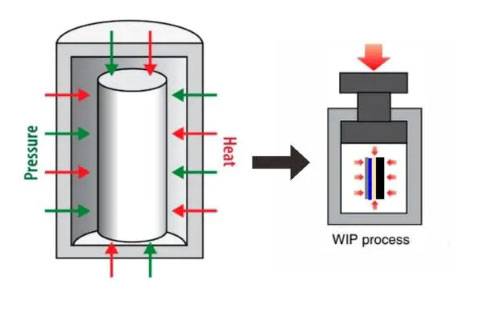
Granulation and Comparison with Dry Pressing
Granulation, a crucial preparatory step, is often performed before isostatic pressing, much like in dry pressing processes. This method involves the formation of powder particles into granules, enhancing their flowability and compressibility. The granulation process is particularly vital in hot isostatic pressing (HIP), where the powder particles are typically granulated through a spraying technique. This technique ensures that the powder particles are uniformly distributed and encapsulated, facilitating better compaction during the pressing phase.
In comparison to dry pressing, granulation offers several advantages. Firstly, it ensures a more uniform distribution of powder particles, leading to higher density and fewer defects in the final product. Secondly, granulated powders exhibit better flow properties, which are essential for consistent filling of the mold and uniform pressing. This uniformity is critical in isostatic pressing, where the pressure is applied from all directions, demanding precise particle distribution to achieve optimal results.
| Feature | Granulation | Dry Pressing |
|---|---|---|
| Powder Distribution | Uniform | Variable |
| Flowability | High | Low |
| Compaction | Efficient | Less efficient |
| Final Product | Higher density, fewer defects | Lower density, more defects |
The use of granulated powders in HIP not only improves the quality of the final product but also enhances the overall efficiency of the pressing process. By ensuring that the powder particles are pre-compacted into granules, the isostatic pressing process can achieve higher densities and better mechanical properties in the final product. This makes granulation an indispensable step in the production of high-quality, dense materials through isostatic pressing technology.
Classification of Isostatic Pressing
Hot Isostatic Pressing (HIP)
Hot Isostatic Pressing (HIP) is a sophisticated process technology that subjects materials to isostatic pressing under high temperature and high pressure conditions. This method is employed for the consolidation of powder bodies, the diffusion bonding of workpieces, and the elimination of casting defects. The primary goal of HIP is to enhance the performance of critical components by eradicating defects and porosity, resulting in fully dense compacts.
HIP typically involves applying gas pressures ranging from 100 to 200 MPa and temperatures up to 2200°C. An inert gas, most commonly argon, is utilized as the pressing fluid. This combination of extreme conditions allows for significant improvements in mechanical and physical properties, including enhanced fatigue resistance, superior surface finish, increased reliability, and reduced rejection rates.
The process involves surrounding the component with a gaseous medium, typically argon, and subjecting it to thermal treatment at high pressure. This results in the consolidation of the materials through a combination of thermal and mechanical forces. The isostatic nature of the pressurizing medium provides greater flexibility with regard to sample shape, as the pressure is uniformly applied from all directions. This flexibility reduces the need for stringent surface preparation, as plastic deformation at the interface facilitates the bonding process.
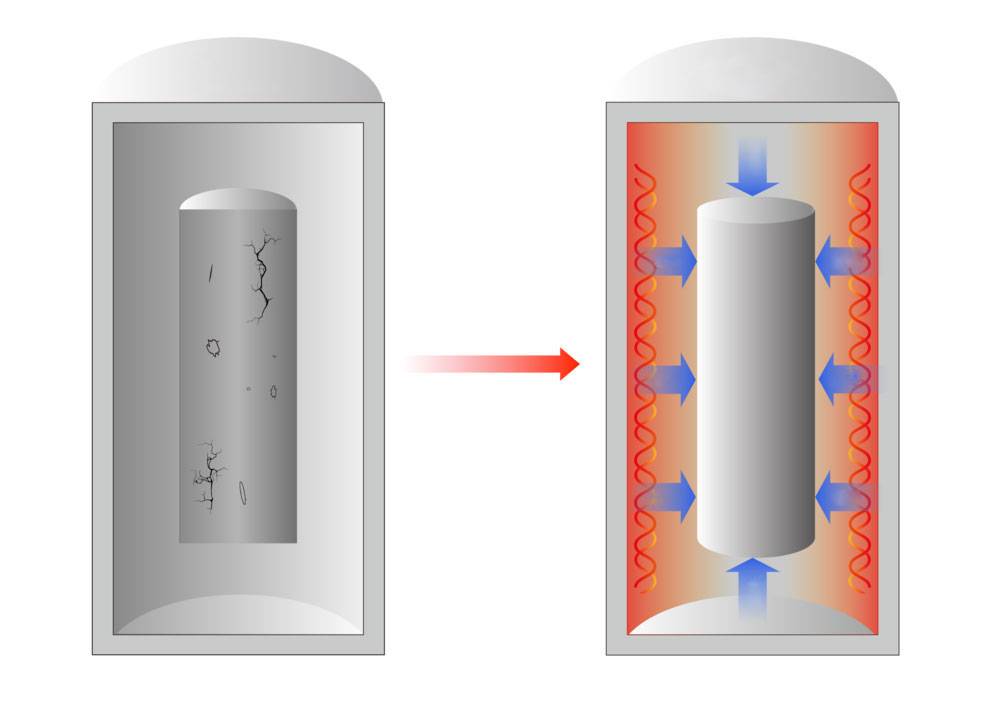
HIP finds extensive use in processing both metals and ceramics, making it a versatile technique for producing high-quality, dense components. The ability to achieve full density and eliminate defects makes HIP an invaluable tool in various industrial applications, particularly in sectors where component reliability and performance are critical.
Cold Isostatic Pressing (CIP)
Cold Isostatic Pressing (CIP) is a sophisticated process that involves subjecting materials to uniform pressure from all directions at room temperature. This is achieved by immersing the material in a high-pressure fluid medium, typically oil or water, and applying hydraulic pressure. The mold used in CIP is made from elastomeric materials such as urethane, rubber, or polyvinyl chloride, which provide flexibility but can result in lower geometric accuracy due to their pliability.
The fluid pressure during CIP operations ranges from 60,000 lbs/in² (400 MPa) to 150,000 lbs/in² (1000 MPa), ensuring that the powdered material is compacted to a very uniform density. This method is particularly effective for shaping and consolidating powdered materials, allowing for the creation of intricate shapes and achieving high green density.

Once the powder is compacted through CIP, the resulting green compact is usually sintered conventionally to produce the desired part. This two-step process ensures that the final product not only maintains a high density but also achieves the necessary structural integrity for its intended application.
Warm Isostatic Pressing (WIP)
Warm Isostatic Pressing (WIP) is a specialized variant of isostatic pressing that operates at elevated temperatures, typically ranging from 80°C to 120°C. Unlike Cold Isostatic Pressing (CIP), which is conducted at room temperature, WIP employs a combination of heat and pressure to compact materials that are not formable at ambient conditions. The process involves the use of special liquids or gases, such as water or oil, as pressure-transmitting media, which are heated to temperatures between 250°C and 450°C.
One of the key advantages of WIP is its ability to apply uniform and equal pressure on all surfaces of the material being processed. This is particularly beneficial for manufacturers in industries such as electronics, where dimensional accuracy and consistency are critical. Traditional methods, such as heated platen pressing, often suffer from non-uniform pressure distribution, leading to variations in part dimensions. In contrast, WIP ensures that the pressure is evenly distributed, resulting in more precise and reliable parts.
The use of warm water or similar mediums in WIP allows for the application of uniform pressure from all directions, which is essential for shaping and pressing powdered materials into dense blanks. This technique is particularly effective for materials that require a higher processing temperature to achieve the desired form and density. By maintaining the temperature below the boiling point of the liquid medium, WIP offers a controlled and efficient method for compacting various shaped parts, making it a cost-effective solution for many manufacturing processes.
Applications of Isostatic Pressing Technology
Improving Organizational Structure of Metal Materials
The integration of spray granulation and hot isostatic pressing (HIP) in powder metallurgy technology represents a significant advancement in enhancing the organizational structure of metal materials. This dual-process approach leverages the unique properties of each method to achieve superior material properties.
Spray granulation involves atomizing molten metal into fine droplets, which solidify into spherical particles upon cooling. This process ensures uniformity and consistency in the size and shape of the powder particles, which is crucial for achieving a homogeneous structure during subsequent processing. The spherical morphology of the granules facilitates smooth flow and uniform packing, reducing the likelihood of defects such as porosity and non-uniform density.
Hot isostatic pressing, on the other hand, subjects these granulated powder particles to high temperature and high pressure in a controlled environment. This technique effectively consolidates the powder into a dense, fully-sintered body, eliminating internal voids and enhancing the material's mechanical properties. The uniform pressure applied from all directions ensures isotropic properties, meaning the material exhibits consistent strength and performance in all orientations.
| Process Step | Description |
|---|---|
| Spray Granulation | Atomizes molten metal into spherical particles for uniform size and packing. |
| Hot Isostatic Pressing | Applies high temperature and pressure to consolidate powder into dense body. |
The synergy between spray granulation and HIP results in metal materials with improved microstructural homogeneity, higher density, and enhanced mechanical properties. This approach is particularly beneficial for producing high-performance components in industries such as aerospace, automotive, and defense, where material reliability and performance are critical.
Producing Near-Net-Size Metal Parts
Isostatic pressing technology has revolutionized the production of near-net-size metal parts, particularly in high-alloy steel applications. This method effectively replaces traditional forging and casting processes, offering significant advantages in precision and efficiency, especially in demanding industries.
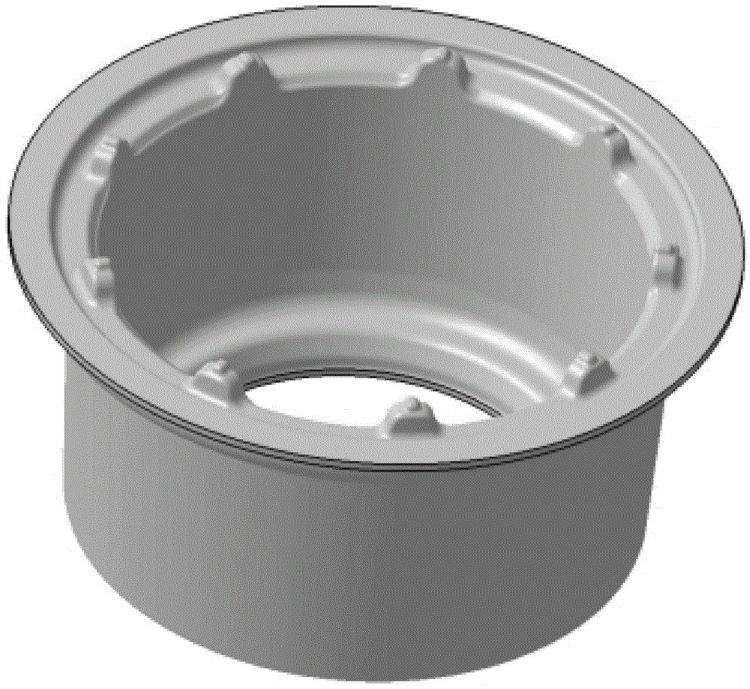
One of the key benefits of using isostatic pressing for near-net-size parts is the ability to achieve a high degree of uniformity and density. Unlike traditional methods that may result in inconsistencies due to localized pressure, isostatic pressing applies uniform pressure from all directions, ensuring a more consistent and dense final product. This is particularly crucial in applications where material integrity and performance are non-negotiable, such as aerospace and defense.
Moreover, the process allows for the production of complex shapes and geometries that would be difficult or impossible to achieve with conventional techniques. The flexibility in design offered by isostatic pressing opens up new possibilities for innovation in part design, enabling engineers to create components that are not only more efficient but also lighter and more durable.
In summary, isostatic pressing technology stands out as a superior method for producing near-net-size metal parts, offering precision, uniformity, and design flexibility that traditional methods simply cannot match. This makes it an indispensable tool in the arsenal of modern manufacturing, particularly in high-stakes industries where performance and reliability are paramount.
Hot Pressing Sintering for Special Ceramics
Hot pressing sintering is a sophisticated technique that simultaneously applies pressure and heat to ceramic powders, facilitating their densification into high-performance materials. This method is particularly effective for achieving theoretical density at lower sintering temperatures, which is crucial for producing advanced ceramic components with superior mechanical, thermal, and electrical properties.
Key Advantages of Hot Pressing Sintering
-
Lower Sintering Temperatures: By applying pressure during the sintering process, hot pressing reduces the need for extremely high temperatures. This not only conserves energy but also minimizes thermal degradation of the material.
-
Enhanced Densification: The simultaneous application of heat and pressure promotes better particle contact, diffusion, and plastic flow, leading to more complete densification. This results in materials with near-theoretical density and negligible porosity.
-
Suppressed Grain Growth: The controlled environment of hot pressing helps in curbing grain growth, which is essential for maintaining the fine microstructure necessary for high-performance ceramics.
-
Versatility: Hot pressing can be adapted to a wide range of ceramic materials, making it suitable for various applications, from aerospace components to medical implants.
Mechanism of Hot Pressing Sintering
During hot pressing, the ceramic powder is subjected to both thermal and mechanical forces. The heat softens the powder, making it more pliable and reducing its deformation resistance. Simultaneously, the applied pressure forces the softened particles to flow and bond together, resulting in a dense and strong final product. This dual action accelerates the sintering process, allowing for shorter cycle times and more efficient production.
Applications in Special Ceramics
Hot pressing sintering is extensively used in the production of special ceramics for high-tech applications. These include:
-
Aerospace Components: Materials like silicon carbide and aluminum oxide, which require high strength and low weight, are often produced using hot pressing.
-
Medical Implants: Biocompatible ceramics for hip and knee replacements are also fabricated using this technique to ensure their durability and performance.
-
Electronics: Advanced ceramics used in semiconductors and other electronic devices benefit from the precise control and high-quality output of hot pressing.
In summary, hot pressing sintering is a pivotal technique in the realm of special ceramics, offering a balanced approach to achieving high-performance materials with optimized properties.
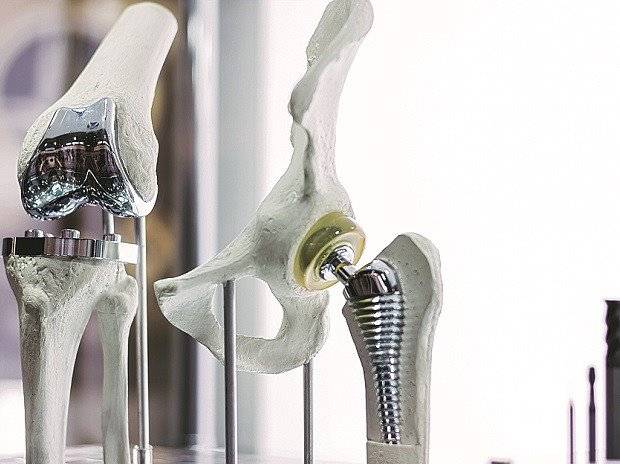
Eliminate or Repair Product Defects
Isostatic pressing technology, particularly through methods like Hot Isostatic Pressing (HIP), plays a crucial role in enhancing the quality of castings by systematically addressing internal defects. These defects, such as internal looseness and shrinkage holes, can significantly compromise the performance reliability and service life of castings. By subjecting materials to high temperature and high pressure, HIP effectively consolidates powder bodies and eliminates these imperfections, ensuring a more uniform and dense structure.
The process involves using a high-pressure container filled with an incompressible liquid or gas medium to apply uniform pressure from all directions. This uniform pressure distribution is key to eliminating internal defects, as it allows for the equalization of stresses across the entire material, thereby closing voids and strengthening the overall integrity. The result is a casting with improved mechanical properties, greater durability, and extended operational life.
Moreover, the application of isostatic pressing technology in defect repair extends beyond just castings. It is also employed in the diffusion bonding of workpieces, further enhancing the structural integrity and performance of various components. This holistic approach to defect elimination and repair underscores the versatility and effectiveness of isostatic pressing in modern manufacturing processes.
Advantages and Disadvantages of Isostatic Pressing Technology
Advantages
Isostatic pressing technology offers a multitude of advantages that make it a preferred method in various industrial applications. One of the most significant benefits is the high density of products it produces. This high density is achieved due to the uniform distribution of pressure from all directions, which ensures that the final product is free from voids and defects. This uniformity in density is particularly crucial for applications where material integrity is paramount, such as in aerospace and automotive industries.
Another notable advantage is the uniform density of pressed blanks. Unlike traditional pressing methods, which may result in density variations, isostatic pressing ensures that the entire blank is uniformly compressed. This uniformity translates to consistent mechanical properties across the entire product, enhancing its reliability and performance.
A significant cost-saving feature of isostatic pressing is the absence of the need for lubricants. Traditional pressing methods often require lubricants to facilitate the pressing process and prevent wear on the equipment. However, isostatic pressing eliminates this need, reducing both the operational costs and the environmental impact associated with lubricant use and disposal.
The excellent product performance derived from isostatic pressing is another key advantage. The high-pressure and, in some cases, high-temperature conditions used in the process significantly enhance the mechanical properties of the final product. This includes improved strength, toughness, and resistance to wear and corrosion, making the products suitable for demanding applications.
Additionally, isostatic pressing boasts a short production cycle. The streamlined process, which involves minimal post-pressing operations, significantly reduces the time required to produce a finished product. This efficiency is particularly beneficial in industries where time-to-market is critical, such as in the production of high-tech components.
Finally, the wide application range of isostatic pressing technology is a testament to its versatility. It is used across various industries, including aerospace, automotive, medical, and electronics, to produce a diverse range of products, from metal parts to ceramic components. This broad applicability underscores the technology's flexibility and adaptability to different manufacturing needs.
Disadvantages
While isostatic pressing technology offers numerous benefits, it is not without its drawbacks. One of the primary disadvantages is the low process efficiency. The intricate nature of isostatic pressing, which involves precise control over pressure and temperature, often results in slower production cycles compared to other forming methods. This can be particularly problematic in industries requiring high-volume production rates.

Another significant drawback is the high cost of equipment. Isostatic presses are sophisticated machines that require advanced engineering and materials to function effectively. The initial investment in such equipment can be substantial, making it a less viable option for smaller operations or those with limited budgets. Additionally, the maintenance and operational costs associated with these high-tech machines can further strain financial resources.
| Disadvantage | Description |
|---|---|
| Low Process Efficiency | Slow production cycles due to precise control over pressure and temperature. |
| High Cost of Equipment | Substantial initial investment and ongoing maintenance costs for sophisticated machines. |
Related Products
- Isostatic Molding Pressing Molds for Lab
- Cold Isostatic Pressing Machine CIP for Small Workpiece Production 400Mpa
- Warm Isostatic Press WIP Workstation 300Mpa for High Pressure Applications
- Warm Isostatic Press for Solid State Battery Research
- Automatic Lab Cold Isostatic Press CIP Machine Cold Isostatic Pressing
Related Articles
- What is Isostatic Pressing Machine
- Understanding Isostatic Pressing: Process, Benefits, Limitations, and Applications
- Isostatic Pressing Technology: Revolutionizing Ceramic Material Densification
- Comprehensive Guide to Isostatic Pressing:Processes, and Features
- The Benefits of Using Isostatic Pressing in Manufacturing
